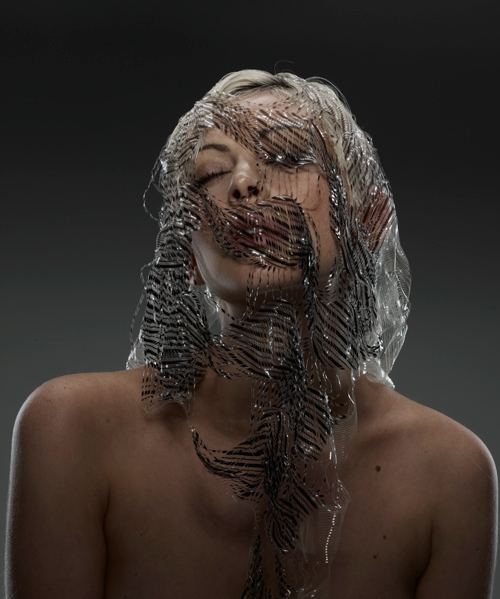For the last couple of weeks I am catching up with puting up my posts, as you know I am a Procteroid and my day job took most of my energy during last couple of weeks. But this is something I definitely wanted to share with you. During my stay in London I went to visit the exibition "Aware: Art Fashion Identity" at the Royal Academy of Arts.
I was most impressed with Hussein Chalayan's ‘Son’ of Sonzai Suru, 2010 who cooperated London College of Fashion students on instaling this construction. I choose to write about this as it connects my key interests - fashion & technology. Sitting by this installation was at the first glance creepy due to "ghosty" movement of the dress and how real the ninjas looked.
You can watch this creation's instalation process video here.
In this installation Chalayan uses Bunraku theatre, a traditional form of Japanese puppet theatre, to examine the manipulative element of the fashion industry. The beauty of the dress is evident, but the controlling figures around it invite us to consider how our perception of the value of fashion is managed by its presentation. The piece demonstrates Chalayan’s ease in bringing together different cultures and creative disciplines.
I also loved the Yoko Ono's video performance piece where people were invited to one by one cut a piece of her clothing of of her.
Yoko Ono first performed this piece in Japan in 1964. She sits motionless on a stage while the public are invited to cut her clothing. Closely in tune with the second-wave feminist movement that began in the 1960s, the work explores women’s emancipation from constraints on their identity represented by clothing and encourages respect for the female body. Ultimately, it also suggests the value of nakedness as an expression of identity in its purest form.
Lastly, I apsolutely loved the Susie MacMurray Widow feminine but up close aggresive widow dress made of leather and needles.
The elegance and feminine beauty of this dress is seductive, but on closer examination the aggression of its form becomes clear. Pins have strong associations with female craft, as well as connotations of pain. The leather replaces traditional dress fabric and represents skin, which is both sensitive and protective. Based on the human (and in this case female) reaction to grief, the work articulates the isolation that such an experience can bring about, how such extreme emotion can cause someone to repel the empathy or intimacy of others.
"I saw that nothing was permanent.
You don't want to possess anything that is dear to you because you might lose it. "




No comments:
Post a Comment